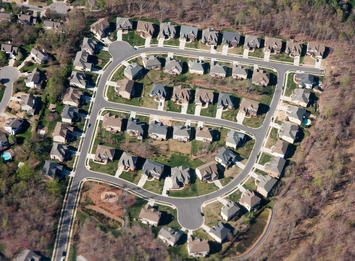
Radical Suburbs: Experimental Living on the Fringes of the American City, by Amanda Kolson Hurley (Belt Publishing, 160 pp., $16.96)
If forced to compare an ice cream flavor with suburbia, many would pick vanilla. Yet, as Amanda Kolson Hurley writes in her new book, Radical Suburbs: Experimental Living on the Fringes of the American City, this is just one of many “misinformed clichés” about these peripheral communities. City-dwellers internalized these attitudes early on. In the early 1950s, novelist Raymond Chandler spoke for many urbanites when he disdained suburban life for its “eight-room house, two cars in the garage, chicken every Sunday and the Reader’s Digest on the living room table, the wife with a cast-iron permanent and me with a brain like a sack of Portland cement.”
“You take it, friend,” he declared. “I’ll take the big sordid dirty crooked city.”
Distaste for suburbia persists, with New Urbanist gurus like Andrés Duany describing suburbanized cities, such as Phoenix, as places “where civic life has almost ceased to exist,” though he offers no real evidence to back up this assertion. Social critic James Howard Kunstler goes even further, suggesting that the “state-of-the-art mega-suburbs of recent decades have produced horrendous levels of alienation, anomie, anxiety, and depression.”
Read the entire piece on City Journal.
Joel Kotkin is the Presidential Fellow in Urban Futures at Chapman University, director of the Chapman Center for Demographics and Policy and executive director of the Center for Opportunity Urbanism in Houston, Texas. He is author of eight books and co-editor of the recently released Infinite Suburbia. He also serves as executive director of the widely read website www.newgeography.com and is a regular contributor to Real Clear Politics, the Daily Beast, City Journal and Southern California News Group.
Photo credit: Nathan Rupert, via Flickr, using CC License.












